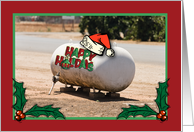Rearrange modules on the homepage
After I log in, I'm taken to the Blackboard homepage where there is lots of university information organized into modules. However, some of the ways that modules are arranged make no sense to me, or put information that I don't need at the top of the screen.
Add relevant modules that I use often
One of my favorite ways that I customize my Blackboard homepage is by adding relevant modules that I use often. Many of my friends are often surprised to find out that they can get a notepad module for writing quick notes, or that there's a way to get updates on campus construction.
Collapse or remove modules
It's easy to get carried away with adding new modules and to forget the original goal of making Blackboard less cluttered and easier to see. Luckily, most modules can be collapsed or removed with no issues!
Configure MyTab
Instead of having a bunch of modules on one page, I prefer to use the MyTab page as a place for additional modules that I can customize further. For me, MyTab currently has a notepad, calculator, and research links so I can easily access information for my assignments.
Add custom URLs to course list
Within the Course List module, I can add up to 5 custom website links for accessing courses that are hosted on another website, or websites I visit often for my classes. For example, I have a link to my favorite online IDE so that I can easily open it in a new tab and work with code alongside the view of my course.
Display course menu in a new window
One of my professors loved to put a ton of information in the course menu, which I found somewhat difficult to read with large text. Instead of trying to magnify a relatively small amount of information on the page, I prefer to open the course menu in a new window, so that all of the information fits on the screen and is easier to magnify.
Add high contrast settings
People who use high contrast displays or inverted screens may benefit from adding high contrast settings that override the custom Blackboard color palettes.
How to make a website look good?
Crop your images to highlight the area you want to be seen. Use photos that reflect your website's theme. Repeating your site colors in the images creates a cohesive look that will make your site look great.
How to make a photo gallery?
Photo gallery best practices 1 Use a link to provide your community with more information. 2 Use clear meaningful photos. Your photos should catch the eye of a visitor. 3 Crop your images to highlight the area you want to be seen. 4 Use photos that reflect your website's theme. Repeating your site colors in the images creates a cohesive look that will make your site look great. 5 Add captions and titles to give your visitors more information. If you are using a Title or Caption, don't use words in your images. This can be distracting and difficult for visitors to read. 6 Add five or fewer photos. New visitors that may be seeing your site for the first time may not see all of your photos if you have more than a handful. 7 Keep your photos up-to-date. Out of date photos will create the impression your site is not being maintained.

Popular Posts:
- 1. how to give individual students extensions in blackboard
- 2. recover lost work on blackboard
- 3. does blackboard accpet mp4
- 4. can blackboard
- 5. how to hack a teacher's blackboard account
- 6. export blackboard test to pdf
- 7. blackboard support chat
- 8. blackboard do not display denominators
- 9. blackboard cannot be reached
- 10. how do i view survey results in blackboard